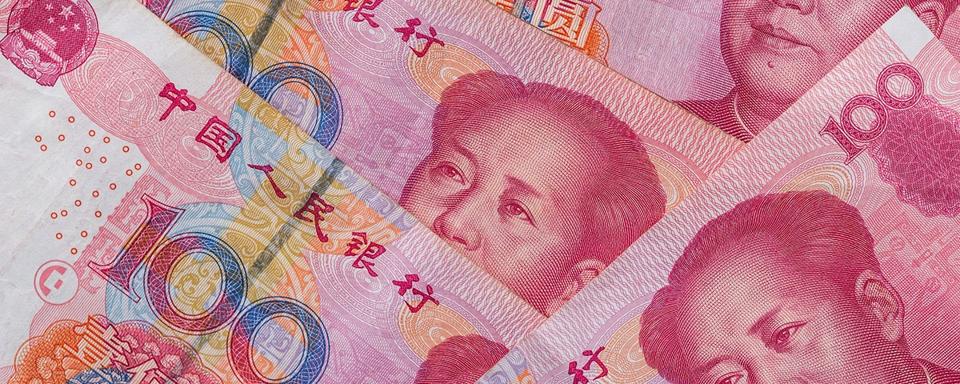Asian equities were mixed overnight as Mainland China and Hong Kong outperformed while India reopened with a thud after yesterday’s market holiday.
Hong Kong and Mainland China had a strong move starting mid-morning following Bloomberg’s report that an RMB 2 trillion ($278B) market stabilization fund will be formed “according to people familiar with the matter”. Yesterday, the State Council’s post-meeting statement included Premier Li advocating for more “forceful” measures to be implemented to “stabilize the market”. The reported plan would utilize overseas profits from state-owned enterprises (SOEs) to buy Mainland China-listed stocks via Northbound Connect, thus requiring a conversion from US dollars to CNY.
CNY rebounded versus the US dollar to 7.17 CNY per USD from yesterday’s 7.19, though the Asia dollar index was up. Unlike the US, neither Mainland China nor Hong Kong have circuit breakers. Thus, both markets are stuck in a negative feedback loop of forced selling, creating more forced selling against the absence of buyers. In the summer of 2015, during the Mainland market’s margin-driven equity bubble burst, margin calls created forced selling, which created more margin calls, etc. The government stabilized the market by buying and suspending stocks to prevent margin calls, though the market did not bottom until early 2016. There is chatter that the size of the stabilization fund could be expanded further with support from China’s sovereign wealth fund.
Hong Kong’s big rebound was marked by strong breadth (advancers versus decliners) and high volumes, at 122% of the 1-year average. The rally was led by Tencent, which gained +3.74%, Alibaba, which gained +3.36%, Meituan, which gained +1.38%, AIA, which gained +3.64%, and Ping An Insurance, which gained +5.03%. I am not sure short covering was a factor though Hong Kong did rally more than Mainland China. The skepticism and lack of coverage from the media is noteworthy.
The China Securities Regulatory Commission (CSRC), China’s SEC, released a statement reiterating Premier Li’s thoughts on markets, a sign the message from the top has been delivered.
Gaming stocks benefited from the elimination of the online gaming spending draft from several weeks ago, which got the head official fired. It is true that issues including real estate prices falling will not be solved in the near term. However, the proposed fund would strengthen China’s currency, raising the potential for an interest rate cut. The fund will not solve the issue of the incremental rebound in domestic consumption and the economy either. However, today indicates the government is aware of the crisis in confidence and is doing something about it. The government does indeed care about public sentiment.
Anta Sport gained +4.21% as Amer Sports looks to IPO in the US.
Sungrow Power Supply gained +4.49% on strong preliminary results, with revenue growing between 76% and 89% while profits between 159% and 187%.
Foreign investors bought a healthy net $528 million worth of Mainland stocks via Northbound Stock Connect.
A good sign would be for Ant Financial to list, in my opinion. If Mainland China’s market decline started with its pulled IPO, an actual IPO might mark the end of it. That is something to put in the suggestion box!
The Hang Seng and Hang Seng Tech indexes gained +2.63% and +3.70%, respectively, on volume that increased +11% from yesterday, which is 122% of the 1-year average. 441 stocks advanced, while 57 stocks declined. Main Board short turnover increased by +24% from yesterday, which is 159% of the 1-year average, as 22% of turnover was short turnover. The growth factor and small caps outpaced the value factor and large caps. All sectors were positive, including Real Estate, which gained +5.92%, Communication Services, which gained +3.82%, and Health Care, which gained +3.14%. All subsectors were positive, including top-performers in software, insurance, and media. Southbound Stock Connect volumes were moderate as Mainland investors sold a net -$680 million worth of Hong Kong-listed stocks and ETFs, including the Hang Seng Tech ETF and Tencent. Meanwhile, Mainland investors were net buyers of Wuxi Biologics, China Merchants Bank, and the Hong Kong Tracker ETF.
Shanghai, Shenzhen, and the STAR Board gained +0.53%, +0.95%, and +1.01%, respectively, on volume that declined -12% from yesterday, which is 81% of the 1-year average. 2,757 stocks advanced, while 2,122 declined. The growth factor and small caps outpaced the value factor and large caps. The top sectors were communication +3.71%, tech +2.13%, and energy +1.56%, while staples -0.24% was the only negative sector. The top sub-sectors were internet, computer hardware, and software, while telecom, liquor, and catering. Northbound Stock Connect volumes were moderate/high as foreign investors bought $528 million of Mainland stocks, with Midea a small net buy and Iflytek and ZTE large net buys. CNY and the Asia dollar index gained versus the US dollar. Treasury bonds sold off along with copper while steel gained.
- CNY per USD 7.17 versus 7.19 yesterday
- CNY per EUR 7.79 versus 7.83 yesterday
- Yield on 10-Year Government Bond 2.50% versus 2.49% yesterday
- Yield on 10-Year China Development Bank Bond 2.64% versus 2.64% yesterday
- Copper Price -0.15% overnight
- Steel Price +0.36% overnight

